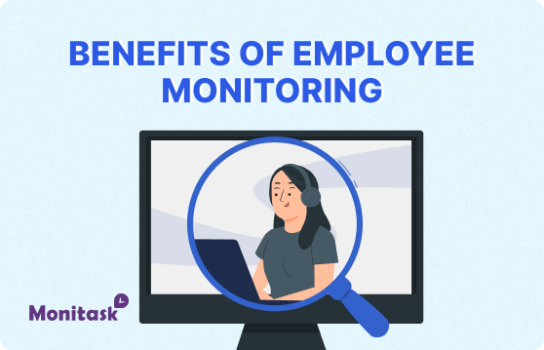Employee Grievance
Employee Grievance: Understanding and Addressing Workplace Concerns
In the complex landscape of modern workplaces, employee grievances are an inevitable aspect of organizational dynamics. These concerns, when left unaddressed, can significantly impact employee morale, productivity, and overall workplace harmony. This comprehensive guide delves into the intricacies of employee grievances, exploring their nature, causes, and effective resolution strategies.
What is an Employee Grievance?
An employee grievance refers to any complaint, problem, or concern that an employee raises with their employer. It can encompass a wide range of issues, from minor disagreements to serious allegations of misconduct or unfair treatment. Grievances may arise from various aspects of the work environment, including but not limited to:
- Working conditions and safety concerns
- Compensation and benefits
- Workload and job responsibilities
- Interpersonal conflicts with colleagues or supervisors
- Discrimination or harassment
- Company policies and procedures
Understanding the nature and scope of employee grievances is crucial for organizations to maintain a healthy and productive work environment.
The Importance of Addressing Employee Grievances
Effectively managing employee grievances is not just a matter of maintaining workplace harmony; it's a critical aspect of organizational success. Here's why addressing grievances promptly and fairly is essential:
1. Improved Employee Morale and Engagement
When employees feel their concerns are heard and addressed, it fosters a sense of value and respect. This, in turn, leads to higher job satisfaction and increased engagement. Employees who believe their organization cares about their well-being are more likely to be committed to their work and the company's goals.
2. Enhanced Productivity
Unresolved grievances can be a significant distraction, affecting an employee's focus and productivity. By addressing issues promptly, organizations can minimize disruptions and maintain optimal productivity levels.
3. Reduced Turnover
Employees who feel their concerns are ignored or dismissed are more likely to seek employment elsewhere. A robust grievance handling process can help retain valuable talent by demonstrating the organization's commitment to employee welfare.
4. Legal Compliance and Risk Mitigation
Many employee grievances, if left unaddressed, can escalate into legal issues. By having a clear grievance procedure in place, organizations can ensure compliance with labor laws and reduce the risk of costly legal battles.
5. Continuous Improvement
Grievances can often highlight areas where organizational policies or practices need improvement. By listening to employee concerns, companies can identify and address systemic issues, leading to overall organizational growth.
Common Types of Employee Grievances
Understanding the various types of grievances that employees might raise is crucial for developing effective resolution strategies. Here are some of the most common categories:
1. Compensation and Benefits
Issues related to salary, bonuses, overtime pay, or benefits are among the most frequent grievances. These can include discrepancies in pay, unfair distribution of bonuses, or inadequate health insurance coverage.
2. Work Environment and Safety
Concerns about physical working conditions, safety hazards, or ergonomic issues fall under this category. Employees may raise grievances about inadequate lighting, uncomfortable temperatures, or lack of proper safety equipment.
3. Workload and Job Responsibilities
Grievances in this area often involve complaints about excessive workload, unclear job descriptions, or unfair distribution of tasks among team members.
4. Interpersonal Conflicts
Disagreements or conflicts with coworkers or supervisors can lead to grievances. These may involve issues of communication, respect, or professional behavior.
5. Discrimination and Harassment
Serious grievances often arise from instances of discrimination based on race, gender, age, religion, or other protected characteristics. Sexual harassment or bullying also fall into this critical category.
6. Management Practices
Employees may raise concerns about unfair treatment by managers, lack of recognition, or inconsistent application of company policies.
7. Career Development and Promotion
Grievances can stem from perceived lack of growth opportunities, unfair promotion practices, or inadequate training and development programs.
The Grievance Resolution Process
A well-structured grievance resolution process is essential for effectively addressing employee concerns. While the specific steps may vary depending on the organization and the nature of the grievance, a typical process often includes the following stages:
1. Informal Resolution
Many grievances can be resolved informally through open communication between the employee and their immediate supervisor or HR representative. This step often involves a discussion to clarify the issue and explore possible solutions.
2. Formal Complaint Submission
If informal resolution is unsuccessful or inappropriate, the employee may submit a formal written complaint. This document should detail the nature of the grievance, any relevant evidence, and the desired outcome.
3. Investigation
Upon receiving a formal complaint, the organization should conduct a thorough and impartial investigation. This may involve interviewing relevant parties, reviewing documents, and gathering additional evidence.
4. Mediation
In some cases, mediation by a neutral third party can be an effective way to resolve conflicts and find mutually agreeable solutions.
5. Decision and Action
Based on the investigation findings, the organization should make a decision and take appropriate action to address the grievance. This could involve policy changes, disciplinary measures, or other remedial actions.
6. Appeal Process
Employees should have the option to appeal the decision if they feel it doesn't adequately address their concerns. This often involves review by a higher level of management or an independent committee.
7. Follow-up and Monitoring
After a resolution is reached, it's important to follow up and monitor the situation to ensure the issue has been effectively addressed and to prevent recurrence.
Best Practices for Effective Grievance Management
To ensure a fair and effective grievance resolution process, organizations should consider implementing the following best practices:
1. Clear and Accessible Policies
Develop and communicate clear grievance policies and procedures. Ensure that all employees understand how to raise concerns and what to expect from the process.
2. Confidentiality
Maintain strict confidentiality throughout the grievance process to protect all parties involved and encourage open communication.
3. Timeliness
Address grievances promptly to prevent escalation and demonstrate the organization's commitment to employee concerns.
4. Impartiality
Ensure that grievances are handled by impartial individuals who have no personal stake in the outcome.
5. Documentation
Maintain thorough records of all grievances, investigations, and resolutions for future reference and legal compliance.
6. Training
Provide training to managers and HR personnel on effective grievance handling techniques and conflict resolution skills.
7. Open Door Policy
Foster an environment where employees feel comfortable raising concerns without fear of retaliation.
8. Regular Review
Periodically review and update grievance policies and procedures to ensure they remain effective and relevant.
Challenges in Grievance Management
While a well-designed grievance management system can significantly improve workplace relations, organizations may face several challenges in its implementation:
1. Cultural Barriers
In some organizational cultures, employees may be hesitant to raise grievances due to fear of repercussions or a belief that their concerns won't be taken seriously.
2. Resource Constraints
Smaller organizations may struggle to allocate sufficient resources for a comprehensive grievance management system.
3. Complexity of Issues
Some grievances, particularly those involving multiple parties or systemic issues, can be highly complex and challenging to resolve.
4. Balancing Fairness and Efficiency
Organizations must strike a balance between thoroughly addressing each grievance and maintaining operational efficiency.
5. Emotional Aspects
Grievances often involve strong emotions, which can complicate the resolution process and require skilled handling.
The Role of Technology in Grievance Management
In the digital age, technology plays an increasingly important role in streamlining and enhancing the grievance management process. Here are some ways technology is being leveraged:
1. Online Reporting Systems
Digital platforms allow employees to submit grievances securely and anonymously, encouraging more open communication.
2. Case Management Software
Specialized software can help track and manage grievances from submission to resolution, ensuring nothing falls through the cracks.
3. Data Analytics
Advanced analytics tools can help identify patterns in grievances, allowing organizations to address systemic issues proactively.
4. Virtual Mediation
Video conferencing and online collaboration tools facilitate remote mediation sessions, making the process more accessible and flexible.
The Future of Employee Grievance Management
As workplaces continue to evolve, so too will the approaches to managing employee grievances. Some trends that are likely to shape the future of grievance management include:
1. AI-Assisted Resolution
Artificial intelligence may be used to triage grievances, suggest resolution strategies, or even facilitate initial conversations between parties.
2. Predictive Analytics
Advanced data analysis could help organizations predict potential grievances before they arise, allowing for proactive intervention.
3. Continuous Feedback Systems
Real-time feedback mechanisms may replace traditional grievance procedures, allowing for more immediate addressing of concerns.
4. Holistic Well-being Approaches
Grievance management may become part of broader employee well-being initiatives, addressing not just specific complaints but overall job satisfaction and engagement.
Conclusion
Employee grievances are an inevitable part of the workplace landscape, but they need not be a source of ongoing conflict or dissatisfaction. By implementing robust grievance management systems, fostering open communication, and continuously adapting to changing workplace dynamics, organizations can turn potential conflicts into opportunities for growth and improvement.
Effective grievance management is not just about resolving individual complaints; it's about creating a workplace culture where employees feel valued, heard, and empowered. It's about building trust between management and staff, and ultimately, about creating a more productive, harmonious, and successful organization.
As we move forward in an increasingly complex and diverse work environment, the ability to address and resolve employee grievances fairly and effectively will become even more critical. Organizations that prioritize this aspect of human resource management will be better positioned to attract and retain top talent, navigate challenges, and thrive in the competitive business landscape.
Remember, a well-handled grievance can transform a potentially negative situation into a positive opportunity for organizational learning and improvement. By viewing grievances not as problems to be solved, but as valuable feedback for enhancing workplace practices, companies can foster a culture of continuous improvement and mutual respect.
In the end, effective grievance management is about more than just complianc or conflict resolution – it's about building a workplace where every employee feels heard, valued, and empowered to contribute their best. It's an investment in your most valuable asset: your people.


